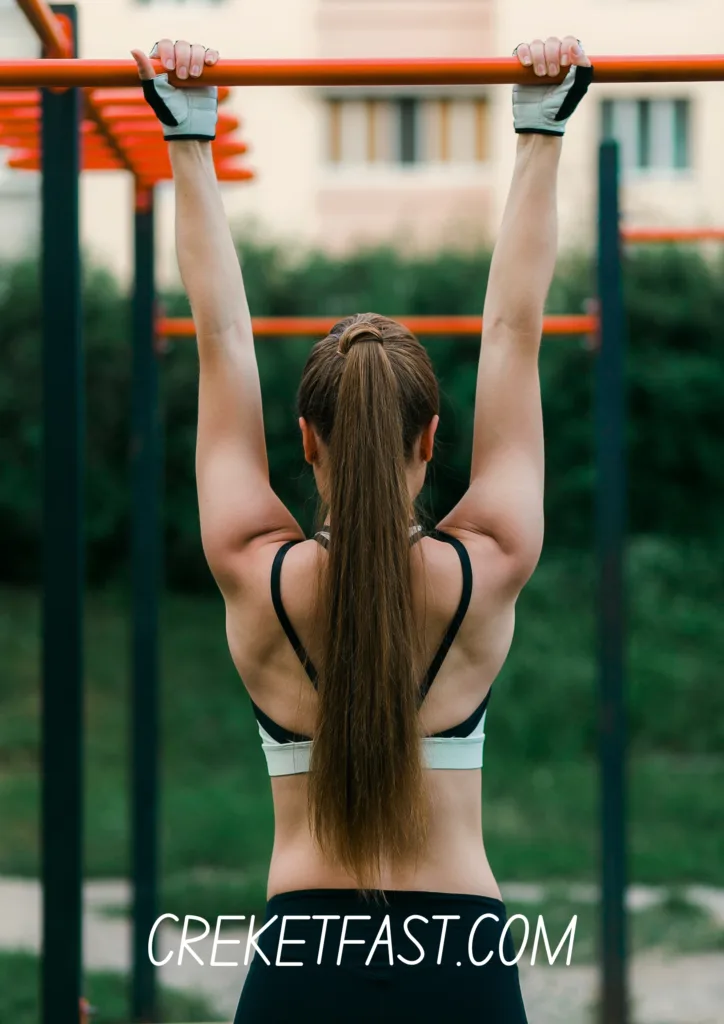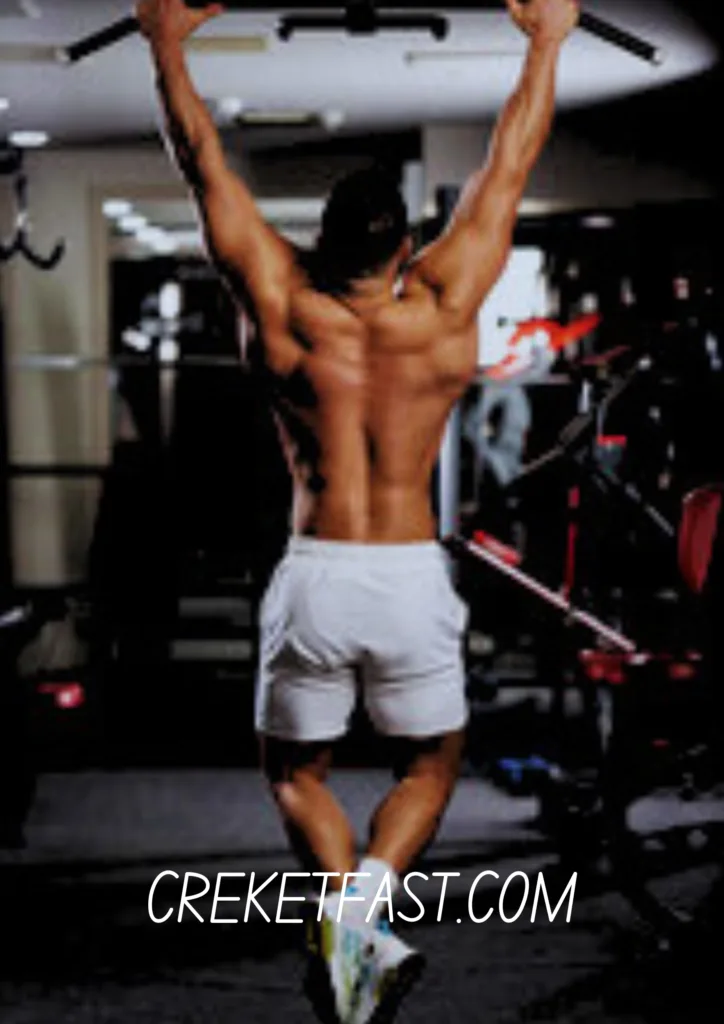Chin-Ups Guides: How To Do Chin-Ups For Biceps
Chin-ups, also known as a chin-up bar, is a bodyweight exercise that primarily targets your upper back, but can also target your shoulders and biceps muscles in your arms. It’s a lot like a pull-up except that your palms face your body, whereas pull-ups are done with your palms facing away.
It’s no secret that the chin-up is one of the most difficult exercises you can do, but with a little practice and dedication, you can master it.
How to Do a Chin-Up
Locate a chin-up bar. Chin-up bars are horizontal bars that are placed above the shoulders. They are commonly found in gyms. However, if you are not a gym member, you can purchase chin-up bars and install them in your home. Put the chin-up bars in a high doorway and place them above the shoulders.
Put your hands on the bar with your palms facing your body: Unlike pull-ups, which start with your hands facing away from your body, chin-ups begin with your hands facing your body, also known as underhand grips. Your hands should be comfortably but firmly gripped onto the bar with your hands shoulder-width apart.
Raise your body until your chin is above the bar. Lift your body to the bar with your upper arms and stop your chin above the bar when your elbows are fully bent. You can also bend your knees, or cross your legs to spread your weight out more.
Lower yourself back down. In a slow, controlled manner, lower yourself down until your hands are at your sides. This is your full chin-up range of motion.

Benefits of the Chin-up:
The main benefit of a chin-up is that it increases upper arm strength and definition. Specifically, it increases bicep strength, posterior deltoid strength, and teres major strength and teres dorsi strength in the shoulders and back. Holding a bar and doing chin-ups also increases crushing grip strength which can help you open stubborn jars or have an impressive handshake.
Since chin-ups involve a large portion of your body, there are many advantages to them. Below are some of the most important advantages of chin-ups:
- Improve upper arm strength and definition
- Improve crushing grip strength
- Easier, safer and more effective than pull-ups
What muscles do chin-ups work?
- The Biceps brachii
- Brachialis
- Brachioradialis
- Latissimus dorsi
- Teres major,
- Posterior deltoid
- Deep spinal stabilizers can all benefit from proper chin-ups.
How to Appropriately Do Chin-Ups for Biceps?
To do chin-ups properly, follow these steps:
Stand under the bar with your arms fully extended and your hands shoulder-width apart.
Position your body: Push your chest out and pull your shoulders down.
Cross your lower legs and bend your knees.
Pull yourself up: Pull your body up and try to lift your chin above the bar. Keep your elbows close to your body.
Focus on performing the movement using your back muscles instead of your arms.
Lower your body: Once you reach the bar, hold for a few moments and slowly lower your body until you have your arms fully extended again.
Complete one repetition correctly and repeat each repetition.

Difference between chin up and pull up
Chin-ups: Similar to pull-ups, chin-ups are performed by gripping and hanging from a horizontal bar and pulling your body up towards the bar, aiming for chest height.
The key difference is the way the hands are held. Chin-ups have a supinated hand, which means your hands are facing you.
In addition, supinated chin-ups tend to be narrower than pullups, and you can clear your chest as far as the bar with this grip, as opposed to the pull-up’s pronated grip.
Pull-ups
A pull-up is one of the most popular bodyweight exercises for upper back strength, muscle development, and overall fitness.
The only tool you’ll need is a pull-up bar. A pull-up bar can be any straight object that hangs horizontally and is thin enough for your hands to hold onto and strong enough to hold your body weight.
Chin Up Tips
Here are a few techniques to help you increase your chin-ups or get to that point where you can get that dreaded first chin-up.
More Frequency:
Let’s start with the obvious: If you want to improve at something, you need to perform more of it. For example, add a maximum set of chin-ups at the end of the warm-up every time you’re at the gym. Or, perform as many chin-ups as possible in as little time as possible (for example, 10 minutes instead of 3 sets of x). This is called EDT.
Slow Down The Eccentric:
Eccentric is the phase where the muscle contractions are at their strongest. If you’re already doing chin-ups, slow down during the eccentric part of the lift, and go as slowly as possible on the final rep.
If you’re unable to do bodyweight chin-ups, there’s a theory that you’ll only be able to do one full chin once you’ve done one 30-second, steady-speed eccentric chin-up. It’s called the “full chin” theory, and it’s been put forth by the legendary strength coach Charles Poliquin.
Be Strict With Form:
This may seem obvious when discussing a ‘strong chin up,’ but it’s important to remember that you’re not trying to fling your legs over the bar, and you’re certainly not trying to curl yourself over it at every rep. To activate your upper back, your chest should be at the apex of the rep.
Weak Point Training:
Bicep curls are great for performance, not just for looks. The bicep is a major contributor to chin-up strength, and may, in theory, have a greater carryover effect than exercises like lat pull-downs. If you have a weak upper back, address it with bandwork, face pull exercises, etc. For some, grip strength can be a weak spot.
Address Mobility:
You may not be able to move your shoulders and scapulars enough to get to the top of the stairs. Some of the most common issues with shoulder mobility are scapular mobility and upper back mobility.
Conclusion
The main point of the text is that chin-ups are a challenging exercise that primarily targets the upper back, but also works the shoulders and biceps. Chin-ups can be done by gripping a chin-up bar with palms facing the body, and they offer benefits such as increased upper arm strength and grip strength. The text also explains the difference between chin-ups and pull-ups, provides tips for improving chin-up performance, and mentions the importance of addressing weak points and mobility issues.
Read: Best Chest Workouts In The Gym

FAQs for Chin-up
Q: What is a chin-up?
A: Chin-ups are a bodyweight exercise in which the upper body is pulled up to a bar with the help of the arms and back muscles.
Q: What muscles does a chin-up primarily target?
A: The primary purpose of a chin-up is to strengthen and tone the muscles in the upper back, particularly the laisses dorsi. However, chin-ups also work the shoulders and bicep muscles.
Q: How is a chin-up different from a pull-up?
A: Chin-ups are different from pull-ups because when you grip the bar in a chin-up, you have your hands facing towards you, while you do pull-ups with your hands facing away.
Q: Can anyone do a chin-up?
A: Chin-ups can be difficult, but they can also be adapted to fit different levels of fitness. Beginners can do chin-ups with resistance bands or with a spotter, while more experienced people can add weight or try different grip variations like a wide-grip chin-up or a one-handed chin-up.
Q: What are the benefits of doing chin-ups?
A: Chin-ups can help improve upper body strength, increase muscle mass in the back, shoulders, and arms, and improve grip strength. They also engage multiple muscle groups at once, making them a time-efficient exercise.

